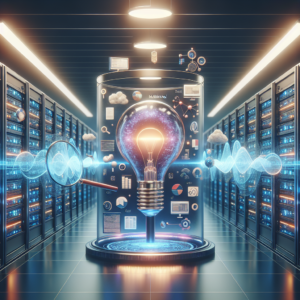What keeps you up at night when it comes to technology? For many of us, the thought of cyber threats looms large, especially as our world becomes more connected. It’s a challenge I face and one that impacts not just individuals but also businesses and governments alike.
Understanding Cybersecurity
Before we can tackle the challenges of cybersecurity, it’s vital to understand what it encompasses. At its core, cybersecurity is about protecting systems, networks, and data from digital attacks. I often think of it as the digital fortress we build around our personal and professional lives.
The Importance of Cybersecurity
With every click I make, I leave a digital footprint. It’s a thought that surely resonates with many of my friends and family. Cybersecurity is essential in safeguarding the information I cherish and rely on daily—things like my bank details, personal messages, and even my social media accounts.
- Data Protection: From my personal experiences, I know how crucial it is to keep my data secure. Breaches can lead to identity theft, financial loss, and a host of privacy concerns.
- Business Continuity: For businesses, data breaches can mean losing customer trust and financial resources. I’ve seen organizations struggle to recover from such incidents.
- Compliance and Legal Repercussions: Understanding the various regulations is daunting. Yet, companies must comply with laws like GDPR, or face significant penalties.
The Digital Landscape
In our ever-evolving digital world, the landscape grows more intricate. Technology has significantly advanced, and while it brings many conveniences, it also heightens risks.
How Technology Evolves
Each breakthrough presents both opportunities and vulnerabilities. In my journey through the tech world, I’ve witnessed how quickly things change, from cloud computing to the Internet of Things (IoT).
Challenges of Evolving Technology
-
Increased Attack Surface: More devices mean more gateways for potential cyberattacks. Exposure only increases with every smart device I add to my home.
-
Rapid Deployment: Companies often rush to deploy new technologies without fully assessing the risks involved. I can see how that might lead to oversights and vulnerabilities.
-
Legacy Systems: Businesses often cling to older systems that may not be software-updated. I’ve seen how these systems can become a breeding ground for cyber threats.
Common Cybersecurity Threats
Every day, I encounter numerous examples of cyber threats, and the more familiar I become, the more I realize how varied these threats can be.
Phishing Attacks
Phishing often starts with simple emails that seem harmless. However, they can devastate many innocent users, including me at times.
-
Spear Phishing: These personalized attempts can be particularly dangerous. An attacker might impersonate someone I trust, tricking me into revealing sensitive information.
-
Whaling: This is targeted at high-profile individuals. I can only imagine the stress and risks that executives face daily with such specific targeting.
Malware
Malware, or malicious software, comes in various forms and can wreak havoc on my devices.
Types of Malware
| Type | Description |
|---|---|
| Viruses | Attach themselves to clean files and spread to others. |
| Worms | Self-replicating malware that spreads without human interaction. |
| Trojans | Disguised as legitimate software to deceive users. |
| Ransomware | Locks files and demands payment for access. |
DDoS Attacks
Distributed Denial of Service (DDoS) attacks can overwhelm systems, crippling their ability to function. It’s alarming to think that a flood of requests can render a service unusable, causing significant downtime.
Insider Threats
Sometimes the threats come from within. I find it unsettling that employees could compromise a company’s security, either maliciously or accidentally.
The Human Element in Cybersecurity
As much as technology plays a role in cybersecurity, the human element is equally significant.
User Awareness
In my experience, educating oneself and others is crucial. It helps to prevent common pitfalls that can lead to security breaches.
-
Basic Cyber Hygiene: Simple practices like using strong passwords can make a world of difference. I have various password managers that help me remember different passwords securely.
-
Social Engineering: Understanding tactics used by attackers makes it easier for me to spot potential threats, such as fake requests for information.
Building a Security Culture
Promoting a culture of security is essential in any organization. I’ve seen how companies that prioritize security create an environment where everyone feels responsible.
Strategies for Improving Cybersecurity
It’s one thing to understand the challenges, but another to have effective strategies in place.
Implementing Robust Policies
Having clear security policies in place is fundamental. I’ve come to realize that these guidelines should encompass everything from acceptable use to incident response.
Regular Training and Education
Continuously educating myself and my peers about emerging threats keeps us prepared. Many companies conduct regular training sessions that simulate real-world cyber attacks.
Investing in Technology
I’ve observed that organizations that prioritize security technology often fare better against threats.
Essential Technologies
| Technology | Purpose |
|---|---|
| Firewalls | Block unauthorized access to systems. |
| Intrusion Detection Systems | Alert administrators of potential threats. |
| Encryption | Protect sensitive data from unauthorized access. |
| Multi-Factor Authentication | Enhance security by requiring more than one form of verification. |
Responding to Cybersecurity Incidents
I’ve learned that how a company responds to an incident can define its future.
Developing an Incident Response Plan
When I think about it, having a proactive plan can mitigate damage and speed up recovery. Companies benefit immensely from practicing their response strategies.
Communication During Crises
Communication is key. I’ve seen organizations struggle when they fail to communicate effectively during an incident. Open lines can help maintain trust with clients and stakeholders.
Post-Incident Review
After an incident, reviewing what happened helps prevent future occurrences. I advocate for organizations to analyze their response and identify areas for improvement.
The Future of Cybersecurity
Looking ahead, I see that the cybersecurity landscape will continually evolve.
Increasing Use of AI
Artificial Intelligence (AI) is becoming a game-changer in cybersecurity. I find it fascinating how machine learning can help detect threats faster and more accurately.
The Rise of Quantum Computing
Quantum computing poses both potential breakthroughs and new threats. It’s an exciting yet daunting prospect. If effectively implemented, it could make traditional encryption methods obsolete.
Growing Importance of Cybersecurity Regulations
As digital landscapes grow more complex, so too will the regulations governing them. Compliance will not only be vital for businesses but also for individuals like me who utilize these technologies.
Conclusion
Navigating the landscape of cybersecurity can feel overwhelming at times. Nevertheless, I believe awareness, education, and proactive measures can significantly enhance my security and that of those around me. Our shared focus on cybersecurity is crucial as we move forward in a connected world, ensuring that we all feel a bit safer as we click through this digital era.






